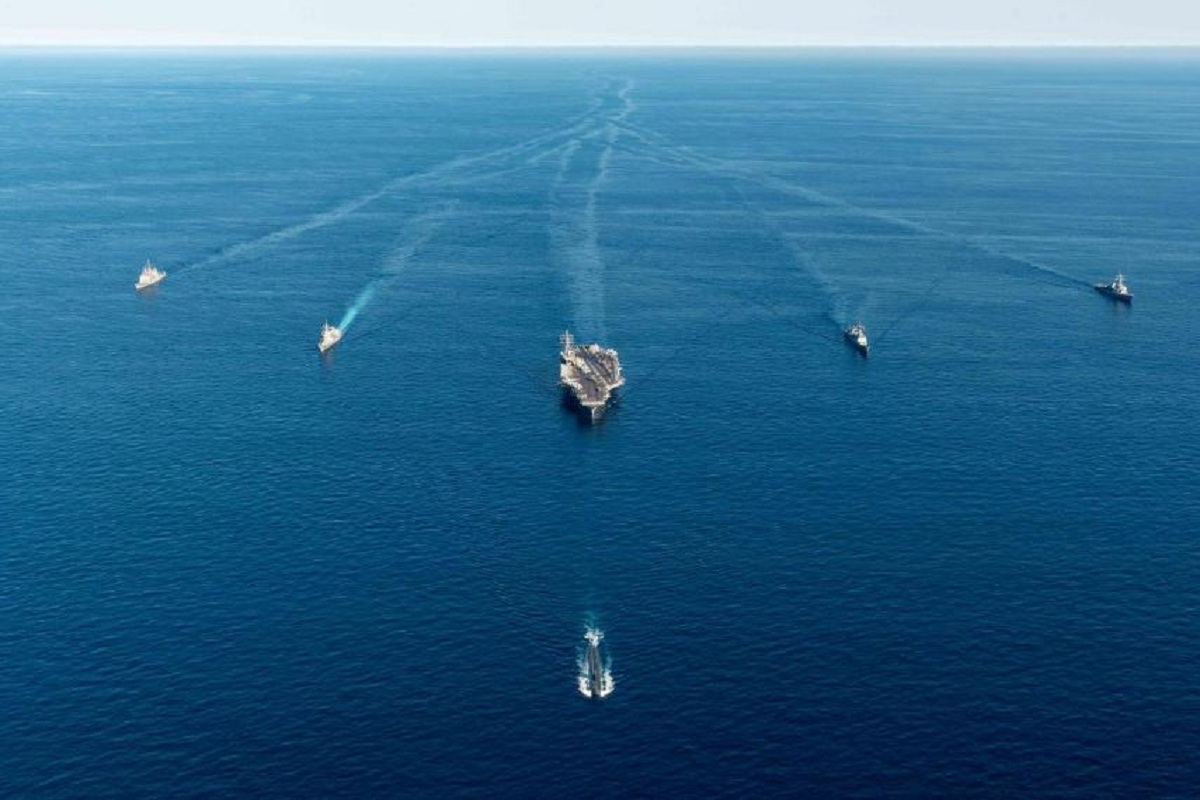India assumes Chair of Asian Disaster Preparedness Centre
India and eight neighbouring countries including Bangladesh, Cambodia, China, Nepal, Pakistan, Philippines, Sri Lanka and Thailand are the founding members of ADPC
In the vast expanse of the Indo-Pacific, recent naval drills and diplomatic dialogues have underscored the intricate web of relationships shaping the region’s geopolitical landscape.

Representation image
In the vast expanse of the Indo-Pacific, recent naval drills and diplomatic dialogues have underscored the intricate web of relationships shaping the region’s geopolitical landscape. Against the backdrop of China and Pakistan conducting joint naval exercises in the Arabian Sea, Russia’s historic maritime engagement with Myanmar, and the United States’ reaffirmation of its commitment to security cooperation with India, New Delhi finds itself at the heart of a complex diplomatic web.
The weeklong naval drills between China and Pakistan mark a deepening of ties between the two nations, raising eyebrows and questions about the evolving dynamics in the Indo-Pacific region. The joint maritime patrols, a first for the China-Pakistan alliance, demonstrate a strategic alignment that could potentially reshape the regional balance of power. For India, these developments necessitate a recalibration of its own diplomatic strategies to ensure stability in the region.
The recent Russian-Myanmar naval exercise adds another layer to the geopolitical chessboard. With Russian vessels Admiral Tributs and Admiral Panteleyev leading the charge alongside Myanmar’s naval assets, the Andaman Sea witnessed what Moscow hailed as a historic event.
Advertisement
For India, with its historical ties to Russia and a growing partnership with the United States, this exercise raises questions about the nuanced balance New Delhi must maintain. The Indo-US “2+2 Dialogue” held in New Delhi showcased the intricacies of India’s diplomatic manoeuvres. The joint statement, while expressing concern over the Ukraine conflict, skilfully avoided direct references to Russia and China.
As India deepens its security ties with the United States, it is prudent not to burn bridges with longstanding partners like Russia. This delicate diplomacy was evident in the careful omission of China from the joint statement, despite indications that it would be a key focus point.
The omission could be read as a nuanced approach, balancing concerns without explicitly naming them. As India’s ties with the USA strengthen, it is crucial to preserve the longstanding relationship with Russia, a key player in the region’s geopolitical landscape. The balance between India’s strategic partnerships with the USA and its historical ties with Russia reflects the country’s commitment to navigating the complex currents of international relations.
Looking ahead, the meeting between US President Joe Biden and Chinese President Xi Jinping adds another layer of complexity. As the USA seeks to re-establish military-to-military ties with Beijing, India’s role becomes pivotal. The delicate dance of diplomacy requires India to navigate its relationships, balancing its security interests with the imperative of maintaining stability in the Indo-Pacific. India finds itself at the crossroads of a rapidly evolving geopolitical landscape.
The recent naval exercises and diplomatic dialogues underscore the need for a nuanced and strategic approach. The tides of diplomacy in this vast ocean demand astute navigation to safeguard India’s interests and maintain stability in the region
Advertisement